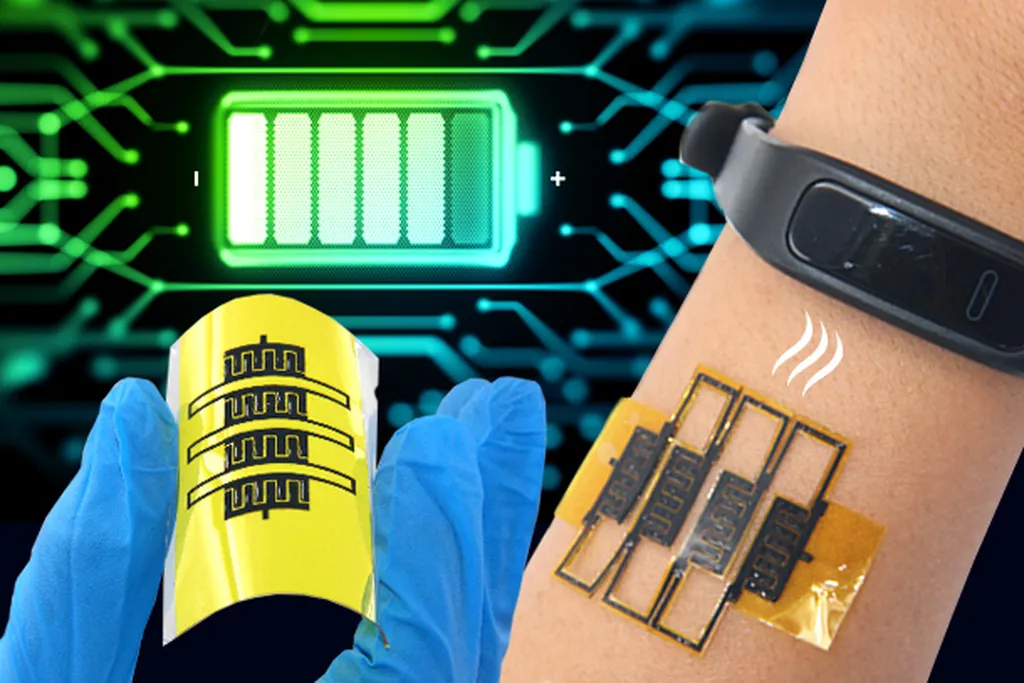In the rapidly evolving world of wearable electronics, energy storage remains a critical challenge. A recent study published in the journal *npj Flexible Electronics* (which translates to “Flexible Electronics”) offers a promising solution, potentially reshaping the future of portable and wearable technology. The research, led by Xiaoping Lin from the College of Textile and Garment at Hebei University of Science and Technology and the China National Textile and Apparel Council Key Laboratory of Electrochemical Technology, introduces high-performance, flexible micro-supercapacitors (MSCs) that could revolutionize the energy sector.
The study focuses on developing flexible MSCs using 2D and 3D patterned fabric-based microelectrodes. The 2D electrodes were created through a screen-printing method with an omnidirectional pre-stretching strategy, while 3D array-structured electrodes were formed via electrostatic actuation. To enhance pseudo-capacitive storage and widen the electrochemical window, nano-MnO2 and Na0.77MnO2 were deposited onto the electrodes.
The results are impressive. The C-C/MnO2-based MSCs exhibited a 21% pseudo-capacitance ratio, achieving an area-specific capacitance of 118.2 mF cm−2 at 5 mV s−1 and an energy density of 39.25 mWh cm−2 at 0.21 mW cm−2. These MSCs maintained remarkable performance under various conditions, retaining 95.05% of their capacitance when stretched, 92.04% when twisted, and 89.74% when folded. They also showed stable performance across a wide temperature range, from -20°C to 60°C.
Moreover, the C-C/Na0.77MnO2-based MSCs extended the electrochemical window to 1.6 V and retained 100.2% capacitance after 6500 cycles, demonstrating exceptional durability and efficiency.
“Our research addresses a significant gap in the market for wearable electronics,” said Xiaoping Lin, the lead author of the study. “The ability to create flexible, high-performance energy storage devices that can withstand various physical stresses and temperature changes is a game-changer for the industry.”
The commercial implications of this research are substantial. As wearable electronics become increasingly prevalent, the demand for reliable, flexible energy storage solutions grows. The MSCs developed in this study could power a wide range of devices, from smart clothing to medical wearables, enhancing their functionality and user experience.
“This technology has the potential to transform the energy sector by providing a stable, efficient, and flexible power source for wearable electronics,” added Lin. “It opens up new possibilities for innovation and development in this rapidly expanding field.”
The study, published in *npj Flexible Electronics*, represents a significant step forward in the quest for advanced energy storage solutions. As the technology continues to evolve, it is poised to shape the future of wearable electronics, offering new opportunities for both consumers and manufacturers alike.

